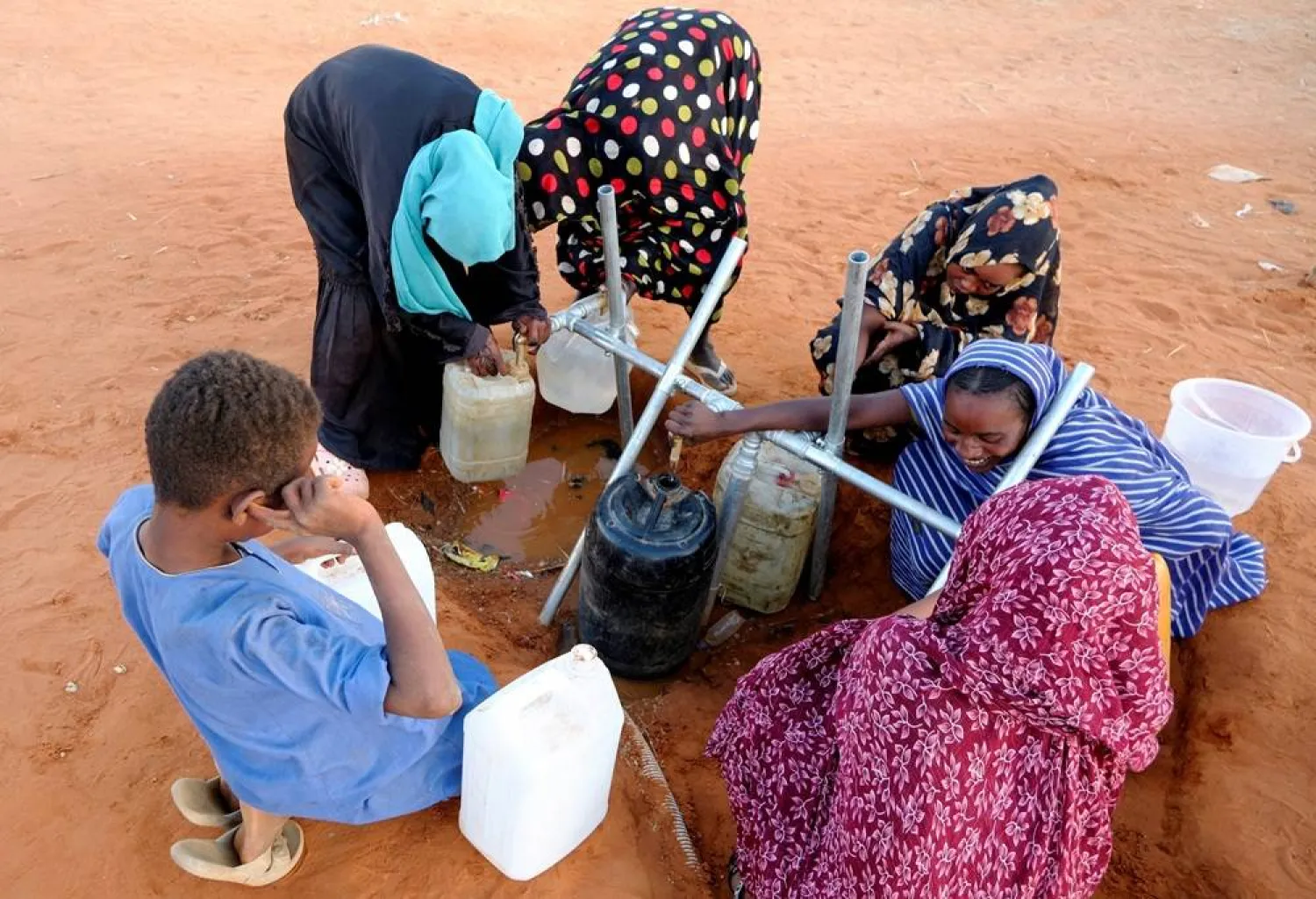Sudan peace efforts resumed in Cairo on Wednesday as Egypt, the United Nations and the United States called for the warring parties to agree to a nationwide humanitarian truce, as the war between the army and its rival paramilitary nears the three-year mark.
Egyptian Foreign Minister Badr Abdelatty told reporters that Egypt wouldn't accept the collapse of Sudan or its institutions, or any attempt to undermine its unity or divide its territory, describing such scenarios as “red lines.”
Abdelatty said during a joint news conference with Ramtane Lamamra, the UN secretary‑general’s personal envoy for Sudan, that Egypt won't stand idly and won't hesitate to take the necessary measures to help preserve Sudan’s unity.
″There is absolutely no room for recognizing parallel entities or any militias. Under no circumstances can we equate Sudanese state institutions, including the Sudanese army, with any other militias,” he said on the sidelines of the fifth meeting of the Consultative Mechanism to Enhance and Coordinate Peace Efforts.
Lamamra said that the fifth such meeting demonstrated that diplomacy remains a viable path toward peace.
The paramilitary Rapid Support Forces, or RSF, and the military have been at war since April 2023. The conflict that has seen multiple atrocities and pushed Sudan into one of the world’s worst humanitarian crises.
Although repeated attempts at peace talks have failed to end the war, Abdelatty said that there's a regional agreement to secure an immediate humanitarian truce, including certain withdrawals and the establishment of safe humanitarian corridors.
Humanitarian aid Massad Boulos, the US senior adviser for Arab and African Affairs, said Wednesday that more than 1.3 metric tons of humanitarian supplies entered el-Fasher, the capital of North Darfur, on Wednesday, with the help of American-led negotiations, marking the first such delivery since the city was besieged 18 months ago.
“As we press the warring parties for a nationwide humanitarian truce, we will continue to support mechanisms to facilitate the unhindered delivery of assistance to areas suffering from famine, malnutrition, and conflict-driven displacement,” Boulos posted on X.
Egyptian President Abdel Fattah al-Sisi discussed with Boulos the need to increase coordination between both countries to achieve stability in Sudan, with Sisi expressing appreciation to US President Donald Trump’s efforts to end the war.
US and key mediators Saudi Arabia, Egypt and the United Arab Emirates, known as the Quad, proposed a humanitarian truce, which both sides reportedly agreed to, but the conflict has persisted.
“The President emphasized that Egypt will not allow such actions, given the deep connection between the national security of both brotherly countries,” the Egyptian president’s office said in a statement.
The United States has accused the RSF of committing genocide in Darfur during the war, and rights groups said that the paramilitary group committed war crimes during the siege and takeover of el-Fasher, as well as in the capture of other cities in Darfur. The military has also been accused of human rights violations.
Latest wave of violence
The UN Office for the Coordination of Humanitarian Affairs, OCHA, said on Tuesday that at least 19 civilians were killed during ground operations in Jarjira in North Darfur on Monday.
A military-allied Darfur rebel group said that it carried out a joint military operation with the army in Jarjira, saying that the operation liberated the area and its surroundings and forced RSF fighters to flee south.
At least 10 others were killed and nine others injured, also on Monday, in a drone attack that hit Sinja, the capital city of Sennar province, according to OCHA and the Sudan Doctors Network.
Sudan Doctors Network said in a statement that the drone strike was launched by the RSF and hit several areas in the city, describing the attack as the latest crime added “to the long list of grave violations against civilians.”
The group said that civilians are being deliberately targeted in a “full-fledged war crime.”
The Sudan Doctors Network also said that it “holds the Rapid Support Forces fully responsible for this crime and demands an end to their targeting of civilians and the protection of civilian infrastructure.”
Recent violence displaced more than 8,000 people from villages in North Darfur, with some fleeing to safer areas within the province and others crossing into Chad, according to the latest estimate by the International Organization for Migration.









